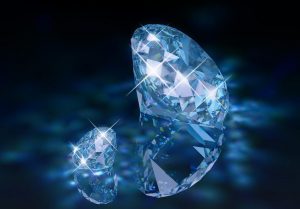In recent years LRS has assumed significance as a very useful technique in gemology. The Raman microscope can be focused to observe very small inclusions and provides a quick spectral analysis in a non-destructive manner.
The LRS consists of:
- A classical microscope
- Laser excitation source
- Spectrometer for detecting the scattered light energy
- Computer for data collection and analysis Procedure
Procedure:
- An Argon laser beam is impinged on the sample being tested.
- A small fraction of this incident light interacts with the vibrational modes of the surface being examined.
- The energy differences of the scattered light are detected by a spectrometer and than analysed by comparison with the database.
- Absorption regions define the vibrational modes of the molecular groups and structural bonding thereby making it a useful tool for elemental analysis.
- It is a quick and accurate technique.
Applications:
- Gem Identification – unknown gem stones; Natural / synthetic identification
- Study of inclusions and internal structure helps in:
- Studded Jewellery.
Disadvantages:
- In identification of organic gemstones; fluorescence spectra of some inclusions are quite common and hence can give misleading results.



























Leave a Reply
You must be logged in to post a comment.